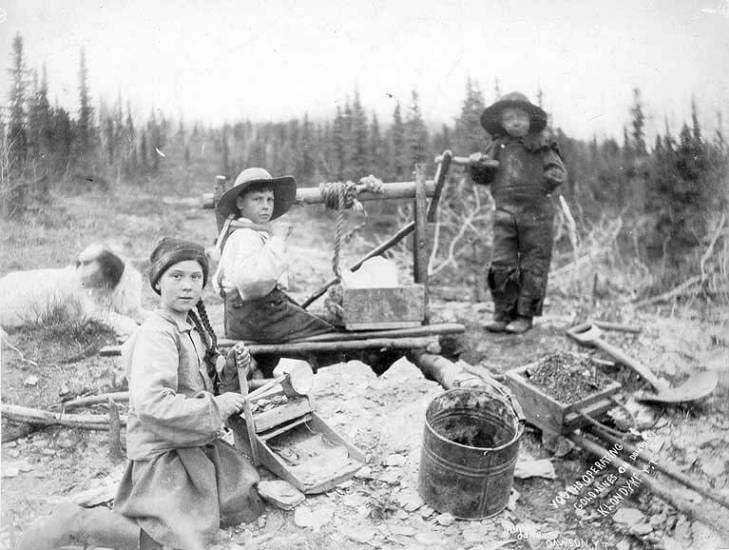November 21, 2019
Mythbuster: The Facts About Greta Thunberg’s Photo Twin
One of the images within UW Libraries Special collections has garnered a lot of media attention lately regarding the resemblance of a young girl in a photograph from 1898 to 16-year-old Swedish climate change activist Greta Thunberg. Several creative theories abound from time travel to how Greta’s image may have been inserted into a historical photo, which is most definitely not the case.
As part of the UW Libraries Special Collections, the photo in question is an original. It is one of many photos taken by photographer Eric A. Hegg (1867-1947). It is one of the Libraries’ cornerstone collections, and one of the largest Klondike-era documentary photograph collections in the region, if not the country. The Hegg collection came into the Libraries Special Collections in the 1960s, pre-dating modern record keeping that would illuminate more detailed information such as who donated the collection, or prior ownership. There are no notes or documentation regarding the identity of the subjects.
Much of what we do know about Hegg is detailed within the UW Libraries digital collection record. As noted in the record, in 1902, Hegg’s negatives and photographs were sold to a Seattle, Washington firm of Webster and Stevens, who removed the Hegg studio imprint from the negatives and sold prints made from Hegg’s negatives as products of their studio. The remaining assets of the Skagway studio were absorbed by Dedman’s Photo Shop, which continues in business to this day in the town of Skagway. That said, there is no way to confirm if the images within the collection originated from this third party, or from other sources.
ABOUT THE PHOTOGRAPHER AND THE COLLECTION
Hegg was born in Sweden and arrived in the Puget Sound region in 1888, settling in Whatcom County.
In the fall of 1897, after hearing of the gold strikes in the Yukon Territories, he joined the thousands of gold seekers heading north, eventually opening up several photography studios in Alaska. He captured the people of Skagway, Bennett and Dawson City during the Klondike Gold Rush from 1897 to 1901. Hegg took one of the most iconic photographs of Chilkoot Pass of miners and prospectors climbing the ice stairs upwards to the top and the awaiting Canada–US border.
In 1997, the Libraries hosted a special exhibit to showcase the collection: Klondike Gold Rush: The Perilous Journey North. In addition to featuring the Hegg collection, people from the community also contributed additional photographs and lent their expertise to further help identify images, some of which feature family members who lived in the area.
“Conspiracy theories aside, we are delighted that the collection is receiving attention because it underscores the historical importance of the images as well the unique role that Libraries and other archives play, not only in safekeeping, but in telling these stories, and ensuring accessibility,” says Lisa Oberg, interim director for the UW Libraries Special Collections.
The University’s Special Collections brings together the University of Washington Libraries’ most rare and unique resources. From papyrus to born-digital, our holdings span history and the globe, and offer boundless opportunities for exploration and discovery. Learn more.
Instructions for Use of Images from UW Special Collections
- Single use fees apply to any for-profit entity (news).
- In order to use photos legally, permission is required. Please refer to the UW Libraries Permission for Use Instructions. And the corresponding application form.
- Any use of the image requires the appropriate citation: University of Washington Libraries, Special Collections, Hegg 3209.
For all media inquires, please contact the UW Libraries Communications Director, Sandy Hawley: shawley1@uw.edu

